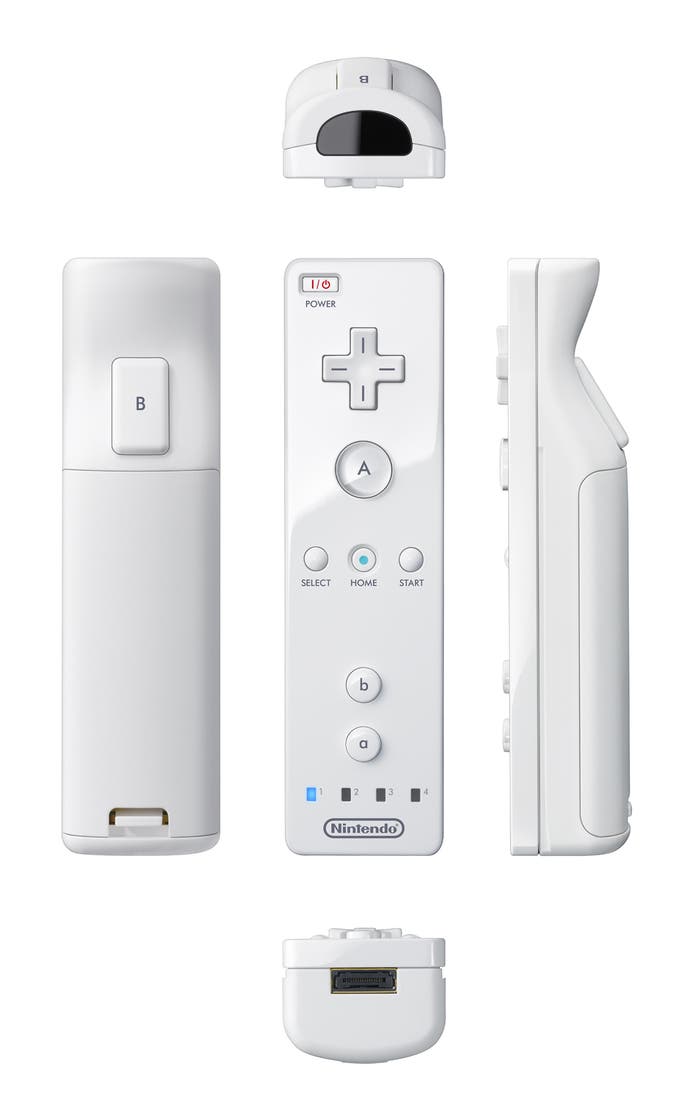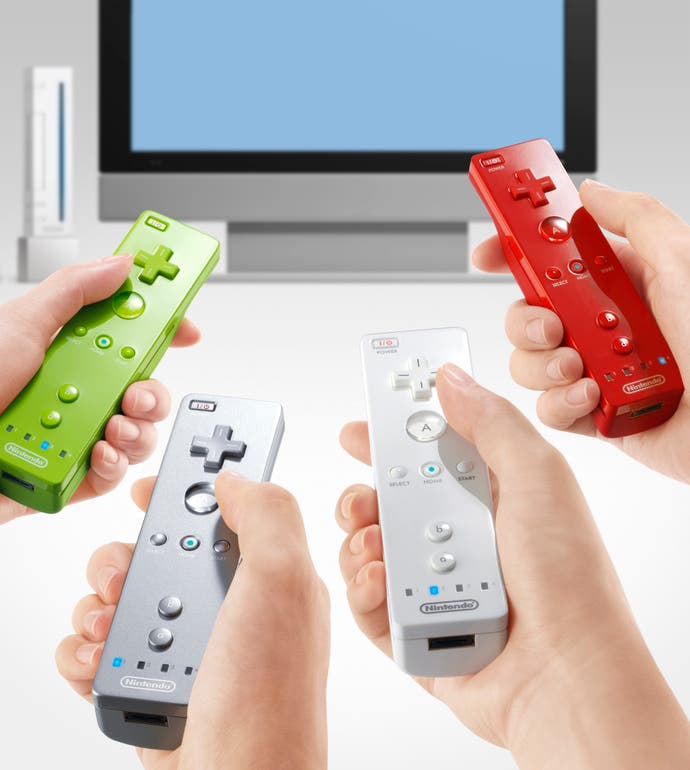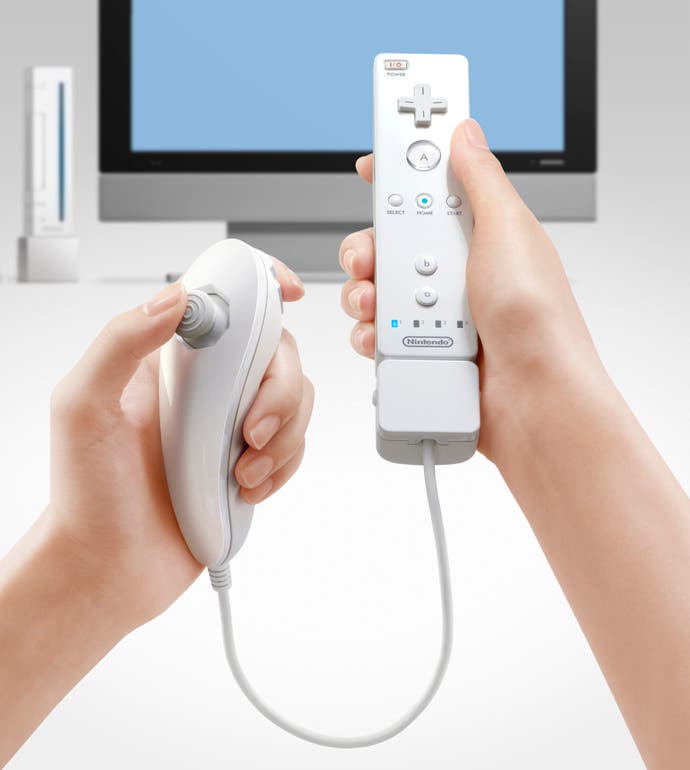Jim Merrick Takes Control
Nintendo bigwig talks Revolution controller.
Well, we've all finally had the chance to take our first look at the controller for the Nintendo Revolution - and whatever you think of it, you can't deny it's different. We had a chat with Jim Merrick, Nintendo Europe's senior director of marketing, to find out more about what they're calling the "freehand-style" controller - how it'll work with multi-platform titles, when we'll get to play the games, and who's going to win the next-gen console battle. What's more, we got a personal guarantee out of him, too... Read on.
Well, first of all, one of our goals was to create a controller that wasn't intimidating - that was as familiar and easy to use as a TV remote. So when you pick it up and point it at the screen, it's just like picking up and aiming a laser pointer, say.
It's designed to make you feel like moving around is very easy and natural. For years we've been moving backwards and forwards with our thumbs, but now all that's going to change.
To use an analogy, it's as natural as putting your hand out of the car window when you're a kid and moving it through the air like a plane. Well, now you might have a flying game where instead of using your thumbs, you're actually tilting the controller to fly the plane.
Then there's what we're calling the nunchuk-style additional controller, so in an FPS game you're holding the remote in your right hand and shooting with your left, using the analog control to strafe from side to side and crouch and so on. It's the ultimate controller for first person shooters.
We've talked a lot about expanding the population and breaking down barriers, and the new freehand-style controller, as we're calling it, is very much a part of that. This controller is just so intuitive - I hate using that term, but it really is!
It's a difficult thing to pin down. I mean, two years ago, Iwata was talking about making a fundamental change in the marketplace and reaching new audiences. And of course, the minute we finished work on the Gamecube, we were thinking, 'Where do we go from here?'

I really started seeing references maybe a year ago - the developers started to get information, and then prototypes, and now they're working with what you saw today.
It's very nearly finished. We've got time to make a few refinements, but fundamentally it's complete.
We went to great pains not to show the software today because we didn't want to detract from what we are trying to show. We're talking about a fundamental change to how we see games and how we play games, and we didn't want to get hung up on polygon counts and so on.
Our official launch date is still 2006, and before we show the software, we want to make sure it's at a stage where you can understand exactly how it's going to work with the freehand-style controller - by actually playing the games.
Put it this way. Without making a commitment, if I went to E3 2006 and didn't end up playing the Revolution, I'd be very disappointed...

Of course! As someone pointed out to me today, here we are, about to throw away 20 years of controller designs - designs which Nintendo came up with! There will be an influence on the industry, absolutely. That said, Nintendo will aggressively protect its intellectual property.
Not at all. We know we have two audiences to reach - one is the expanding audience, new consumers or people who used to play games but have since quit.
But we can't only embrace that audience. We have to recognise the people who put us on the map, and make sure we continue create games for them.

We're producing a classic-style expansion controller, based on traditional designs like the Gamecube controller. It's like a shell with a hole in the top into which you slot the freehand-style controller, and then you can play third-party ported games, and retro Nintendo games you've downloaded.
So there's that option - but even while it's inserted into the classic-style shell, the freehand controller will still be able to sense positioning and so on, so there are more options too.
It's something that's just as true for the DS - not every game uses the DS's unique features. But some multi-platform titles do, like The Sims 2 for example. We hope other developers will do the same and look at ways their multi-platform titles can make use of the Revolution's features.
I guarantee it. It works with LCDs, plasma screens, projectors... Everything. It's not like the old lightgun technology, where you had the classic problem of requiring a CRT screen. But this isn't working on a scan line basis, so there are no issues there.
It certainly could make us market leader. We have formidable competitors and I'm not going to make any sweeping, grand statements, but the Revolution has the potential to appeal to new groups of consumers we've previously been unable to reach. It also has appeal for hardcore gamers, and the ability to bring a lot of people back to gaming.

Yes, absolutely! It's always fun when you can surprise people and spark their imaginations. But we do face a communications challenge, in terms of how we communicate exactly what this new controller is and what it can do.
There are so many great new capabilities - the controller knows not only what you're pointing at, but exactly how far you are away from the TV, for example - and it's important that we get all these across.
Let's just say we have more surprises in store.
Jim Merrick is senior director of marketing for Nintendo Europe.

